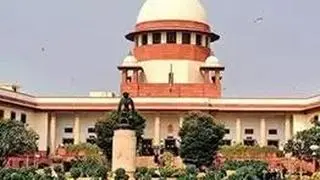Welcoming the Supreme Court ban on sale of firecrackers in Delhi-NCR, many people in other urban centres have sought similar curbs to be imposed to bring down air pollution levels in their cities, a quick random survey conducted by the Assocham Social Development Foundation said.
However, a majority of people seemed indifferent to the ban and said a judicious mix of command and control measures is the key to protect public health as pollution levels have only been going up from year-to-year during Diwali and questioned the relevance of such bans, the survey, conducted as part of Assocham’s corporate social responsibility initiative, said on Monday.
Many even said construction activity, road dust, vehicular pollution, waste burning and other such factors are majorly responsible for deteriorating air quality across most cities in India and the authorities should take strong measures to keep a check on rising pollution levels.
The social development arm of Assocham had interacted with about 1,500 people in 15 important cities – Ahmedabad, Bengaluru, Bhopal, Chandigarh, Chennai, Dehradun, Guwahati, Hyderabad, Jaipur, Kolkata, Lucknow, Mumbai, Patna, Raipur and Ranchi. The survey was conducted during the last six days to ascertain the views of the people on the Supreme Court’s October 9 order suspending sale of firecrackers in Delhi-NCR.
“Rising air pollution in cities is not just negatively impacting the environment but it might hit sectors such as tourism and outdoor recreation and others, thereby, severely hurting ‘brand India,’ as people largely avoid polluted areas with dense and toxic air,” said D.S. Rawat, Secretary-General, Assocham.
Appreciating the efforts of communities involved in spreading the word against firecrackers, he said, schools along with resident welfare associations and those in the healthcare/ medical sector have been carrying out campaigns throughout the country with a view to sensitising people about the harmful effects of firecrackers, which has also led to growing environmental awareness.
About 35 per cent of the respondents said a ban on sale of firecrackers in Delhi-NCR must be welcomed considering the need to avoid a spike in pollution to hazardous levels even though many of them opined that the effectiveness of such a ban remains to be seen.
About 30 per cent expressed anguish and resentment and felt that the apex court's ban would mar the festive mood as there has been a long tradition of lighting fireworks on the festival of lights, Diwali, especially in northern parts of India. Some of them even termed the ban as ‘unfair.’
Many of them also said it would only lead to a rise in the discreet sale of firecrackers and said instead of being selective only for Diwali, there should be a blanket ban on firecrackers for all festivals.
Of the remaining about 20 per cent said the ban is not going to make much of a difference to air pollution levels and seemed indifferent about the ban. Many said the authorities should have been considerate about fireworks’ manufacturers, traders and their families.
The rest of them suggested that the industry in India must come up with green fireworks which are made of special paper and without sulphur as they emit less smoke and leave almost no scrap after being lit.
Overall, a majority of respondents said they are geared up for Diwali as they have already purchased face-masks to protect themselves from toxic air pollution.
There are about 800 licensed fireworks units in and around Sivakasi in Tamil Nadu, where this industry accounts for a market size of about Rs 2,500 crore and employs about 10 lakh workers in both the organised and unorganised sectors.
According to experts, the fireworks industry in India has been registering degrowth of about 40 per cent annually during the last five years, leading to a rapid decline in profit margins of manufacturers and traders owing to the prevalence of illegally imported Chinese firecrackers, rising raw material prices, dearth of labour, restrictions imposed by the local administration, anti-cracker campaigns and other inter-linked factors.








Comments
Comments have to be in English, and in full sentences. They cannot be abusive or personal. Please abide by our community guidelines for posting your comments.
We have migrated to a new commenting platform. If you are already a registered user of TheHindu Businessline and logged in, you may continue to engage with our articles. If you do not have an account please register and login to post comments. Users can access their older comments by logging into their accounts on Vuukle.